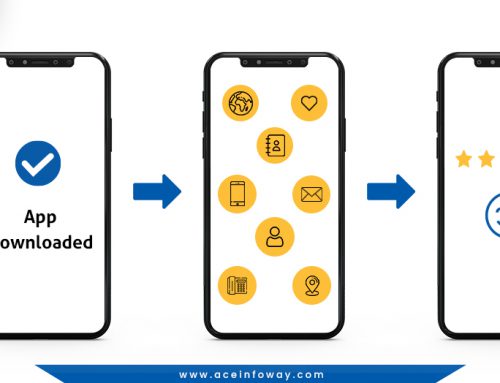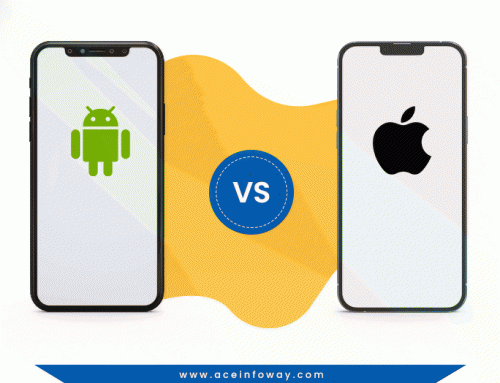Table of Contents
Google Android and Apple iOS jointly possess almost 99% of the global market share.– Statista
Android and iOS are the two most popular operating systems for mobile devices. In light of the fact, the company targets both iOS and Android mobile users while developing applications. For which they are required to develop two separate applications for both the platforms. However, investing the entire time, effort, and resources twice, for developing the same applications for two different operating systems, is not a feasible approach for a business, whose main objective is to make a profit.
Cross-platform application development frameworks prove to be extremely helpful here, liberating you from the hassles like re-coding or hiring a dedicated developer for each platform. This makes the development process extremely cost-effective, which can be accredited to the approach followed by the framework i.e. Write Once, Run Anywhere.
There are numerous cross-platform app development frameworks available in the market, among which React Native is the most popular one. According to a survey conducted by Statista in 2020, a whopping 42% of the developers prefer to use React Native for their mobile app development.
React Native is an open-source framework, created by Facebook, which works on the motto- Learn Once, Run Anywhere. React Native is used to developing native mobile applications with React JS for Android and iOS. Due to its amazing features like shorter learning curve, fast reload, the third-party React Native component library, and faster development, React Native has become the choice of tech mammoths like Tesla, Facebook, Skype, etc.
To dig deeper into its features, read:
Why should you choose the React Native framework for your next Mobile Development Project?
React Native is considered as one of the most cost-effective cross-platform app development frameworks. Here are the factors that make React Native lighter on the pocket, and help you reduce the cost of app development.
Why is React Native considered as a Cost-effective Mobile App Development Platform?
Various factors decide the cost of an application, such as- scope and requirement of the application, desired platforms of the applications, app category, specialized developers, and development time and effort. React Native also reduces the overall cost of application development through these factors and proves to be a highly cost-effective mobile app development platform.
-
Faster Development
The development time indirectly contributes to the cost of the mobile application. Developing a mobile application for two different platforms is a real challenge for the business, requiring you to develop the application in the dedicated language and unnecessarily investing the same amount of time and resources twice.
React Native liberates the developers from re-writing the entire code from the scratch for the platforms, allowing them to compile it for two different platforms merely by selecting its type from the options. Doing this, React Native tends to save a lot of development time, which can be utilized in some other productive work.
-
Easily Maintainable
The journey of app development does not end with its launch, there is a lot to do even after that, such as the app launch, updates, and fixes. Generally, to update your application, you are supposed to submit the updated code and application version to the app store and then wait for the app store approval to implement it.
React Native empowers you to update your application remotely without interrupting the user’s application usage, making the app maintenance easier and less time-consuming. The feature is also beneficial for the users as well, as they need not download the updated versions of the application from the play store, rather the updates are directly pushed by the developer through the CodePush plugin. The elimination of app versioning reduces the maintenance cost.
-
Reusable Components
Reusability has been the most desired thing for the developers, as it brings a considerable difference in the cost of the application/ software, reducing the amount of time and resources required in the development process.
The cross-platform nature of React Native allows the developers to reuse the components interchangeably within both the platforms that are Android and iOS. So, once you have written a JavaScript code for your application for one platform, you can directly compile and reuse it for the other, eventually reducing the development cost and time.
-
Real-Time Testing
React Native facilitates you with real-time testing of the application, through its feature called Fast Refresh which tends to speed up the app development process. Fast Refresh makes it a lot easier and faster to induce any change in the app CodeBase.
With the fast refresh, you need not refresh, test, and compile the entire application every time you roll out a single change within the application CodeBase, React Native does this automatically for you. Hence, whenever you make a change, the framework automatically refreshes the application and reflects the change made in it. This way you can test your changes live and fix the errors if required.
-
Seamless Integration with the Native Application
The major challenge while developing a mobile application that includes native functionality, is its compatibility with the native applications such as camera and GPS. React Native is known for its spectacular native app compatibility, liberating the developers from the stress of integrating the native application with their application.
As React Native offers a seamless app integration without hampering the performance of the application, the developers need not develop the modules separately or put any extra effort into the app integration. This contributes to the cost-effectiveness of the framework.
-
No more Additional Resources Required
Developing an application requires you to consider various factors such as the desired platform, hiring dedicated developers with specialized skills, maintaining separate codebases for the applications. Being a cross-platform framework, React Native simplifies the process for you. Hence, you need not use any sort of additional resources for your application for the different operating systems, the same resources will work for you.
This facility adds to the cost-effectiveness of React Native, liberating you to pay extra money to hire dedicated developers for each platform, investing extra time to maintain the codebase separately, and cloning the native applications for your applications.
-
Enormous React Native Component Libraries
React Native comes with a humongous UI component Library, and along with this, it also allows the developers to use third-party libraries as well. This lessens the workload, effort, and time of developers by allowing them to use the pre-existing components from the libraries itself, eventually reducing the cost of the application.
Why is React Native considered a Cost-effective Mobile App Development Platform?
The demand for applications is rising at a great pace. Today, users want applications for everything, which has created a lot of pressure on the companies to avail applications for their services. However, merely creating applications just for the sake of creating it, won’t get you a place in the market, you are worthy of. You have to be cautious towards your app performance as well as its compatibility with the other native applications, that too within your budget.
React Native impeccably fits here, empowering you to develop a cost-effective, yet a highly functional application for your business. React Native is a powerful and cost-effective framework, however, without expert guidance, it won’t reap benefits for you. Hence, if you are willing to harness the complete power of the framework into your business and create an application that stands out in the market, so, reach out to our experts and hire a React Native developer.


























Leave A Comment